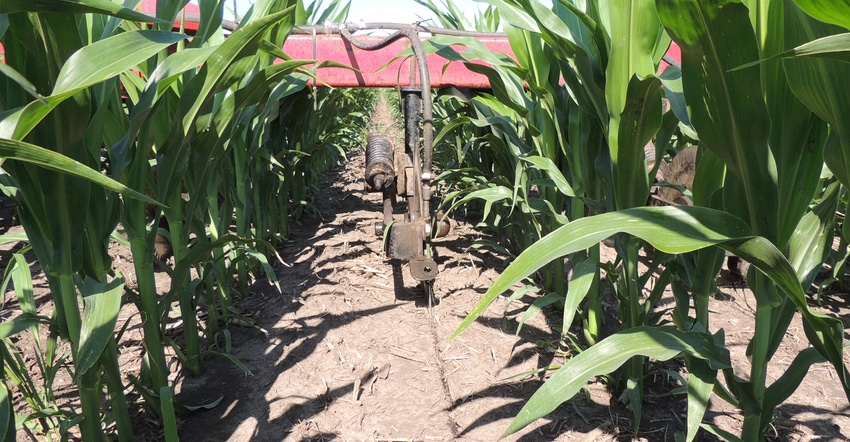March 30, 2020

Farmers who use the 4R’s of crop nutrient management — applying the right source, at the right rate, at the right time and in the right place — optimize inputs to maximize plant uptake and minimize field losses. Ten years ago, Stu Swanson, farming in Wright County in north-central Iowa, made the decision to fine-tune the 4R protocol on his corn, soybean and hog operation, and today is reaping the economic and environmental benefits.
“I see the symbiosis between animal agriculture and crop production. Livestock has been a part of my family’s legacy for several generations,” Swanson says. “Having an understanding of how crops and livestock complement each other helps us reach our sustainability goals. The livestock use the grain that’s produced, and the byproduct of the livestock fertilizes the crop. With crop and livestock production systems working together, efficiencies on the farm have improved, and it’s also good for the environment.”
Testing soil, manure key
Soil testing on 2.5-acre grids and regularly testing manure for nutrient content is at the foundation of rethinking nutrients on Swanson’s farm. Hog manure is sampled and analyzed several times throughout the year because feeding systems in the barns vary during the hog production life cycle. Rations fed to small pigs are different than rations fed as pigs grow older toward eventually reaching market weight. And that can change the fertilizer nutrient composition of the manure produced.
“It’s really important to have a baseline test done each year at each location you’re sourcing the manure from,” he says. “We get a sample at the beginning and then midway through the life cycle and toward the end.”
He says taking several samples of the manure is especially important in lagoon systems where you may be drawing from the surface. “When you get down to where more of the solids are located in the manure storage structure, whether it’s an outdoor lagoon or a concrete pit under the hog building, the nutrient analysis can change in a hurry,” he notes. “That’s why I say the more samples, the better.”
Testing has resulted in less money spent for commercial fertilizer. “I didn’t give full credit to the benefits of manure the first 20 years I farmed,” Swanson says. “An intensive focus on getting the right mix of organic and commercial fertilizers to balance soil fertility has paid off in terms of crop yield and has resulted in an acceleration of soil health gains, which is rewarding.”
Timing enhances productivity
In addition to testing soil and manure, Swanson knew based on the principle of “right time,” it was better for the environment to limit fall anhydrous applications. In his farming operation today, most of the nitrogen for the corn crop is applied during the growing season, and a nitrogen stabilizer is added to the little bit of anhydrous that’s applied in the fall.
Using various soil conservation practices also helps limit nutrient loss and improve water quality. Buffer strips minimize erosion and loss of nutrients from Swanson’s fields. “We have more than 5 miles of buffers to help keep the soil in place," he says.
Additionally, through careful evaluation, Swanson has moved his less-productive land into conservation programs, enhancing the return on the productive cropland acres. “Using the Conservation Reserve Program or a similar program on the less-productive areas of a field makes more sense than spending money on inputs that subtract from the bottom line,” he says.
Plans for future
Changes Swanson makes to his farming system need to accommodate the weather, which has become less predictable. In the future, using a Y-drop system for applying liquid nitrogen fertilizer for corn will improve upon the principles so the crop receives the “right amount” of nitrogen at the “right time.”
“Adding the Y-drop system would allow me to make adjustments in application based on the weather,” he explains. “It would give me a lot more flexibility to do early or late sidedressing of nitrogen based on weather and soil conditions — improving the timing of applications.”
Fine-tuning his nutrient management has helped Swanson maximize the return on his investment and maintain a high level of productivity. “I wish I had made the changes I now have in place sooner,” he adds. “The 4R standards help to make farmers wise stewards of inputs.”
For more information, visit 4rplus.org.
About the Author(s)
You May Also Like






